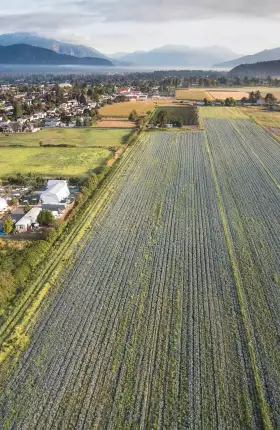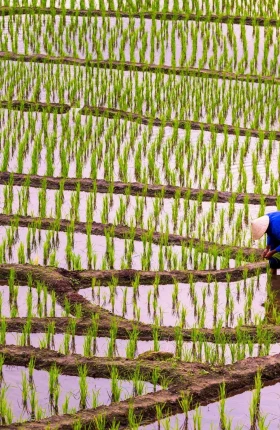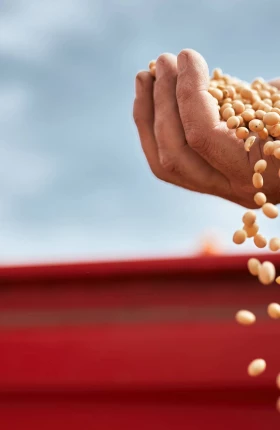The scale of the problem is staggering. Each year, 1.6 billion tons of food worth about $1.2 trillion are lost or go to waste—one-third of the total amount of food produced globally.
This massive misuse of resources is emerging as a critical global issue, with the UN’s Sustainable Development Goals setting a target of halving food loss and waste by 2030. The urgency reflects the fact that the food waste disaster has far-reaching implications. According to the UN’s Food and Agriculture Organization and the World Resources Institute, it accounts for 8% of global greenhouse gas emissions. And it is difficult to imagine solving the hunger problem—some 870 million people around the world are undernourished—when so much of the global food supply is lost between the farm and the table.
The challenge is enormous, but there is a clear way forward. On the basis of an extensive analysis of the food value chain from production through retail and consumption, BCG has identified five drivers of the problem, issues that—if addressed—could reduce the dollar value of annual food loss and waste by nearly $700 billion and create major progress toward hitting the SDG target. Certainly no one group, government, or company can make this happen. Rather, real headway will require commitment and coordinated action from consumers, governments, NGOs, farmers, and companies.
Companies that play a major role in the food value chain in particular can be catalysts for change. Through our research, we have identified 13 concrete initiatives companies can take to address those five drivers and help slash the amount of food lost and wasted every year.
Companies that play a major role in the food value chain can be catalysts for change.
A Growing Problem—and a $700 Billion Opportunity
Food loss or waste occurs at all steps in the value chain—but it is most pronounced at the beginning (production) and at the end (consumption). (See Exhibit 1.) In developing countries, the problem is largely a function of the production and transportation of food from farms, while in developed countries it is most prevalent in the consumption phase, among both retailers and consumers
To understand the scale and scope of the problem, BCG created a food loss and waste model. (See “Quantifying the Food Waste Challenge.”) That work reveals a disturbing upward trend line: BCG projects the volume of food loss and waste will rise 1.9% annually from 2015 to 2030 while the dollar value will rise 1.8%.
Quantifying Food Loss and Waste
Quantifying Food Loss and Waste
To get our arms around the food waste problem—and the potential solutions—BCG has built a proprietary model to forecast food loss and waste to 2030. The model, which builds on data from the Food and Agriculture Organization, The World Bank, and the IMF, tracks food waste and loss along four dimensions: region, step in the food value chain, food type (such as fruit and vegetables, meat, or cereals), and year.
We projected food loss and waste on the basis of forecasts of food volumes (both production and consumption) and loss intensity (the percentage of food lost and wasted) for each region, step in the food value chain, and food type. Forecasts for both volumes and loss intensity are based on numerous factors, including historical food production and consumption trends (both per capita and total), growth in population, GDP per capita, and the historical correlations between those factors. Our base scenario forecasts food loss and waste assuming that the development paths for countries around the world, and the production and consumption of food within those countries, follow historical trends.
For a clearer view of the forces at work, we dug into information from major food waste global initiatives. That research helped us identify five drivers of the problem: lack of awareness of the issue and of possible solutions, inadequate supply chain infrastructure, supply chain efficiency efforts that do not focus sufficiently on food loss and waste, weak collaboration across the value chain, and insufficient regulations.
For each driver, we estimated the annual reduction in loss and waste that would be possible if all stakeholders—such as governments, NGOs, farmers, and companies—took action. (See Exhibit 2.) The estimates are based on currently available technologies and processes and reflect realistic progress in each driver, not complete elimination of the issue.
- Awareness. There is poor visibility into the extent of food loss and waste at all stages in the value chain, from production to consumption. The lack of awareness is particularly acute among consumers but is also an issue among food service providers, restaurants, and hotels. Consumers, for example, have limited information to guide the selection of options that minimize food waste. Case in point: they often think that meats, fish, fruits, and vegetables are healthier when fresh than when frozen. In fact, the opposite is often true: frozen food products frequently retain more nutrients than unfrozen items, which can degrade during the shipping process. As a result, consumers continue to demand and purchase fresh items that are out of season in their area—and those purchases come with high transport costs and large amounts of waste. Furthermore, excess purchasing by consumers is encouraged by grocery promotions. This drives up food waste because consumers are often unable to consume all their purchases before they go bad. A major effort to increase awareness among all stakeholders is crucial—with particular emphasis on encouraging consumers to shift away from products that contribute to waste. Such action could reduce the problem by $260 billion annually.
- Supply Chain Infrastructure. The right infrastructure could go a long way in addressing food loss and waste, but too often it is lacking. Cold chain, for example, could significantly preserve and extend the life of products. But it is nonexistent in many emerging markets, creating food storage and transportation conditions early in the value chain that lead to large-scale food loss. Deploying more-advanced supply chain solutions—including cold chain in developing markets—could reduce the problem by $150 billion annually.
- Supply Chain Efficiency. Digital supply chain tools can allow better matching of supply and demand, make transactions in the supply chain more efficient and seamless, enable the tracking of loss and waste, and even allow for dynamic pricing, which can move products through the system before they expire. But companies have been slow to adopt these tools. In addition, processes and KPIs throughout the value chain are not typically designed to systematically identify and eliminate food loss and waste. Food makers’ efforts to improve productivity tend to focus on large levers, like equipment availability and speed on the manufacturing line, rather than on food loss, which often is harder to resolve and where improvements yield a smaller financial payoff. Widespread adoption of such processes and tools could reduce the problem by $120 billion annually.
- Collaboration. Lack of coordination among players across the value chain, particularly between raw material producers and processors, contributes significantly to inefficiency, loss, and waste. For example, in the absence of well-designed agreements with processors, farmers may harvest earlier than is optimal to relieve cash flow pressures—leading to a lower volume of lower quality crops. Improved coordination among producers and suppliers could reduce the problem by $60 billion annually.
- Policy Environment. Regulations, industry standards, and tax policy have generally not been put in place or designed with an eye toward minimizing food loss and waste and encouraging efficient repurposing. Disposing of food waste remains very cheap, and tax policy neither penalizes companies and consumers for the waste they create nor incentivizes them to reduce waste. At the same time, expiration dates are unnecessarily conservative, and cosmetic standards—for example, the size of blueberries appropriate for fresh sale—are arbitrarily restrictive in markets such as China. Standards for imported food differ significantly across countries, creating inefficiencies at the production step and making it difficult for producers to shift their exports in response to changes in demand. Regulations, taxes, and other policies that encourage more consistent repurposing (finding another valuable use for) and recycling (disposing of in a way that minimizes material sent to a landfill) of food into the highest value products possible could reduce the problem by $110 billion annually.
Global, coordinated action to address all five drivers can slash the value of food lost and wasted every year by nearly $700 billion—just about delivering on the SDG target. That is a massive opportunity for society, one that should compel action.
But if the size of the prize is clear, the task of delivering on that $700 billion opportunity is a complex one. Success demands commitment from and collaboration among numerous players. Government must support and in some cases subsidize opportunities to reduce food loss and waste and incentivize better repurposing. International bodies such as the World Trade Organization should work to improve rules surrounding the cross-border flow of food. Consumers must adopt practices that reduce waste. And companies need to step forward as leaders on the issue and implement strategies to reduce food loss and waste.
How Companies Can Combat Food Waste
While all groups have a part to play in combating food loss and waste, the role of companies that operate in the food value chain is perhaps the most critical. These companies are involved in every part of the chain, from production through to consumption. As a result, their decisions and actions have an outsized impact. In addition, they have deep expertise and insight on the potential solutions—and the resources to invest in them. Finally, they have significant influence among all stakeholders, including farmers, consumers, and the public sector.
We have identified 13 initiatives that companies can take—and that some are already taking—to address the five key drivers of food loss and waste at all steps in the value chain. (See Exhibit 3.) There are multiple actions in each of the 13 initiatives, resulting in a total of 70-plus concrete actions.
- Awareness. There are four major initiatives companies can take to increase awareness of both problems and solutions. First, they can work with farmers to improve harvesting techniques. CropLife International, a consortium of large life science companies such as BASF, Bayer, Syngenta, and Monsanto, has formed more than 300 public-private partnerships since 2005 to provide training to more than 3 million smallholder farmers and agricultural workers in more than 60 countries. The training helps those farmers and workers protect their crops against pests, diseases, and weeds, and reduce loss during and after harvest.
Second, companies can design new (or revamp existing) products, packaging, and promotions and help change consumers’ behavior. There is already significant activity in this area. Marks & Spencer, for example, has introduced ethylene-absorbing strips into strawberry packaging, a feature that can extend shelf life by up to 50%. French supermarket chain Intermarché in 2014 launched its Inglorious Fruits and Vegetables campaign, which offers imperfect fruits and vegetables at a 30% discount. And Tesco has experimented with a Buy One Get One Free–Later program that allows customers to pick up their free product when they actually need it, cutting down on the temptation to stock up on discounted products that will go bad. We see the potential to create even greater change in consumers’ behavior. Fair trade campaigns, for example, have encouraged people to buy products that yield a livable wage for farmers. A push for a food waste reduction ecolabel could drive a similar change in behavior.
Third, companies need to ensure that employees have the skills to manage inventory efficiently and properly repurpose and recycle waste. For instance, Sodexo and Ikea have partnered with food waste technology company LeanPath to implement a food waste tracking system in their food production operations. The system not only tracks and measures waste but also identifies the causes, including overproduction, trim waste, and spoilage. The goal is to raise food service employees’ awareness and change their behavior, using tools such as automatic goal setting and instant alerts.
Fourth, companies can facilitate repurposing and recycling among consumers by, for instance, adding information to product packaging. Carrefour Taiwan is promoting awareness of the importance of using leftover food through its antiwaste restaurant, opened in 2016, which serves dishes made from unsold food items from distributors, wholesale partners, and its own stores.
- Supply Chain Infrastructure. Companies can take three key initiatives in this area. First, and perhaps most relevant in developed markets, companies can invest in continually expanding and improving cold chain infrastructure. Global shipping company Maersk has equipped all of its 270,000 refrigerated containers with remote container management (RCM), which enables continuous recording and monitoring of the container’s location, temperature, humidity, and power status. The solution can significantly cut food spoilage by allowing Maersk and its customers to identify and fix any issues with the containers or plan for alternatives such as unloading containers earlier than scheduled.
Second, in developing markets, companies can adapt technologies designed for large-scale commercial operations to smallholder farming operations. A prime example: public-private-social partnerships have developed low-cost, “pay as you store,” solar-powered refrigeration units to help farmers in regions like South Asia and East Africa aggregate, store, and preserve their production to avoid spoilage and enable sale when prices are more favorable. The Rockefeller Foundation is working with TechnoServe, private fruit and vegetable export company Meru Greens, and others to implement such units in Kenya.
Third, companies along the value chain can improve how they repurpose and recycle unmarketable crops, byproducts, and food waste into donations or other products such as cosmetics, biofuels, and animal feed. This can involve either investing in infrastructure, technology, and equipment to repurpose on their own site or contracting with a third party for that service. Zembra Group, for example, is using innovative biorefining technology to transform crude olive mill waste—the material left over from the olive oil extraction process—into products that can be used in agriculture, cosmetics, construction, and other industries. Retailer Tesco, for its part, repurposes baked goods into animal feed, converts oil waste into biodiesels, and is piloting the use of the FoodCloud app in several countries to provide excess food supplies to charities.
- Supply Chain Efficiency. Transforming the supply chain will not only help slash food loss and waste; it will also improve operational efficiency and potentially reduce costs for companies. There are two primary areas for action.
First, companies can increase the degree to which they source ingredients and inputs locally. This “localization” of the supply chain—which can require some adjustments in product ingredients and formulas—reduces the amount of time products are in transit and, thus, spoilage. For instance, PepsiCo’s global fruit and vegetable procurement team works with in-country procurement groups to identify opportunities to source ingredients locally. In many cases, this requires significant investments to provide local farmers with training and technical support.
Second, companies can set KPIs related to food loss and waste, track performance against those metrics, and adapt their processes to improve performance. Food packaging and processing company Tetra Pak, for instance, has refined its powdered milk manufacturing technology to cut product loss by up to 30%, reduce energy and water consumption by up to 35%, and slash operational costs by up to 50%. Target and Whole Foods are also taking advantage of new automation and software capabilities to improve their supply chain processes. New tools allow both retailers to ship directly from the warehouse to the store floor and tailor deliveries and shelving to store layouts in a way that cuts down on the amount of perishables that go to waste. Meanwhile, General Mills, named a Food Loss and Waste 2030 Champion by the US Department of Agriculture and the Environmental Protection Agency, has committed to a target of sending zero waste to landfills from all of its production sites by 2025 and achieved that objective at seven (14%) of those sites by the end of May 2017. At the same time, the company has adopted new processes for converting food waste into biogas and electricity, significantly reducing food waste from its manufacturing plant in Murfreesboro, Tennessee.
- Collaboration. Better collaboration among companies across the value chain is critical to reducing food loss and waste. We have identified two levers in this area. First, a variety of players, including producers, processors, and governments, can join forces to develop more accurate supply and demand forecasting models. Public agencies, for example, can set up a data clearinghouse in which they collect, aggregate, and anonymize consumer demand forecasts from processors and retailers for a food item or product. That consolidated and sanitized data can be shared with farmers and other producers, who can adjust their product plans accordingly. Such initiatives have shown great results in certain markets, with overproduction in some cases cut to zero and no stockouts.
Second, producers, handlers, processors, and retailers can structure contracts and agreements in a way that reduces loss and waste. Buyers of food commodities, for example, can set prices and volumes in contracts that reduce the incentive for farmers to overproduce. For its part, Tesco guarantees suppliers such as agricultural companies, cooperatives, and farmers that it will purchase at least 80% of the orders that it places with them, reducing the need for farmers to either overproduce or underharvest.
- Policy Environment. Finally, companies can and should become advocates for reducing food loss and waste. First, distributors and retailers can urge the adoption of industry standards, including the setting of clear date labels, such as “sell by,” “best by,” and “use by” dates. Companies such as General Mills and Nestle, USA are part of a new industry-wide effort launched by the largest grocery producers and retailers to standardize date-label wording on packages. The goal is to help reduce consumers’ confusion over these dates, which can result in unnecessary food waste.
Second, companies can support and promote national and state regulations or taxes that encourage food donations and increase the costs associated with discarding food. France, for example, passed a law in 2016 banning grocery stores from throwing away edible food and establishing a fine of $4,500 for each violation.
Companies that take action to reduce food loss and waste will do more than address a critical societal issue. They stand to reap significant business rewards. First, they will reduce costs in the supply chain by leveraging new technologies and improving process efficiencies. In fact, our TSI analysis found that companies that lead in reducing their environmental footprint tend to boast margins that are 3.3 percentage points higher than those of other companies.
In addition, food loss and waste reduction efforts can unearth new revenue streams by transforming losses, byproducts, and waste into new products. And as more attention and resources are directed from government and other players to reduce food loss and waste, companies can partner with those groups. The insights and innovation that result can create a competitive advantage.
There are also less tangible, but equally powerful, benefits. A focus on addressing the global food loss and waste problem will improve a company’s standing with a variety of stakeholders. This can include better working relationships with farmers who provide raw materials, stronger connections to consumers who value the company’s focus on societal issues, and an improved ability to attract and retain talent as people increasingly seek employers with a mission. Furthermore, when companies adopt new tools and more efficient processes to slash waste, they develop the expertise and capabilities of the workforce.
Turning Commitment into Action
For companies that are committed to playing a role in reducing food loss and waste, it is crucial to understand where to start. Three steps can build momentum:
- Choose where to play. Companies will typically have many opportunities to contribute to solutions, but they must focus their energy. They should first assess which of the 13 initiatives outlined above are the most relevant for the organization. Storage and transportation companies, for example, can play a big role in the development of cold chain in emerging markets, while processing companies may see major leverage in creating a digital supply chain or improving supply-demand forecasting. With those relevant areas identified, companies can further focus their efforts by determining where they have significant expertise, resources, and—most important—passion.
- Find the right partners. Once companies know where they want to act, they should look for partners that can accelerate their efforts. Partners can bring deep knowledge of the food loss problem, critical relationships in markets where action is required, and insight on innovative funding options, including blended financing arrangements involving the public sector or NGOs.
- Measure impact. Companies should set clear goals for their efforts and measure their impact in reducing food loss and waste. They should also track and measure the business benefits in terms of cost reduction or new revenue opportunities. And they should share those metrics both internally and externally. Many companies still struggle to measure their impact. But those who do will be able to build support for their efforts among employees, external groups, and potential partners.
It will not be possible to solve the food loss and waste problem without the private sector’s leadership and action. If companies take aim at the problem, identify where they can deliver impact, and link up with partners in industry and the public sector, they will make a difference—both for their organization and for the world.
Acknowledgments
The authors would like to thank Food Nation and State of Green for collaborating in the preparation of this article.












